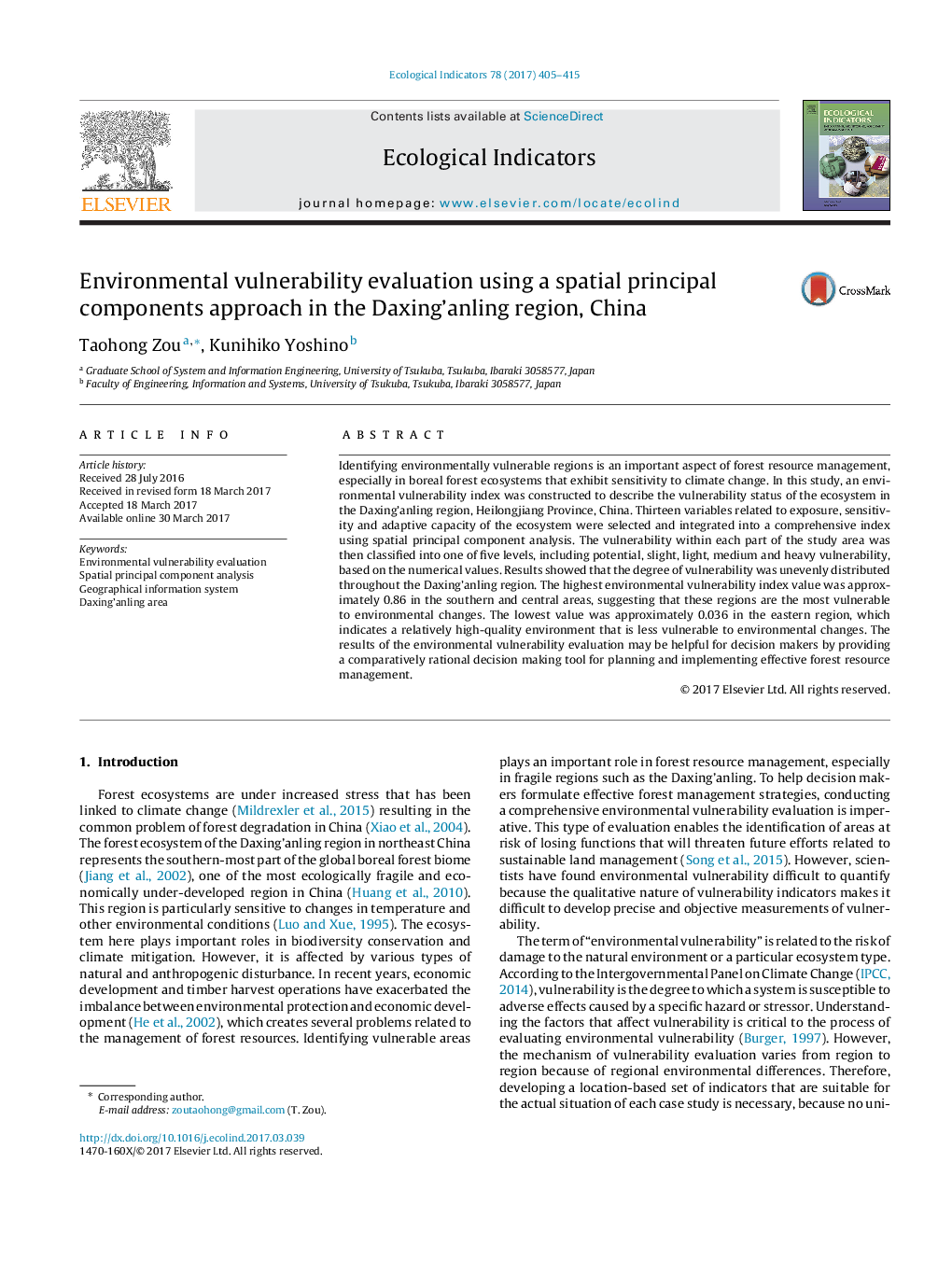| Article ID | Journal | Published Year | Pages | File Type |
|---|---|---|---|---|
| 5741648 | Ecological Indicators | 2017 | 11 Pages |
â¢A framework to evaluate environmental vulnerability is proposed.â¢Thirteen indicators were analyzed.â¢The indicators were related to exposure, sensitivity and adaptive capacity.â¢These indicators were integrated to environmental vulnerability index.â¢A foundation for sustainable strategic planning is provided to address environmental vulnerability.
Identifying environmentally vulnerable regions is an important aspect of forest resource management, especially in boreal forest ecosystems that exhibit sensitivity to climate change. In this study, an environmental vulnerability index was constructed to describe the vulnerability status of the ecosystem in the Daxing'anling region, Heilongjiang Province, China. Thirteen variables related to exposure, sensitivity and adaptive capacity of the ecosystem were selected and integrated into a comprehensive index using spatial principal component analysis. The vulnerability within each part of the study area was then classified into one of five levels, including potential, slight, light, medium and heavy vulnerability, based on the numerical values. Results showed that the degree of vulnerability was unevenly distributed throughout the Daxing'anling region. The highest environmental vulnerability index value was approximately 0.86 in the southern and central areas, suggesting that these regions are the most vulnerable to environmental changes. The lowest value was approximately 0.036 in the eastern region, which indicates a relatively high-quality environment that is less vulnerable to environmental changes. The results of the environmental vulnerability evaluation may be helpful for decision makers by providing a comparatively rational decision making tool for planning and implementing effective forest resource management.
